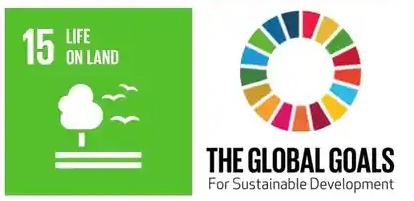How to access Serengeti National Park
Although located in a rather remote corner of our planet. Serengeti National Park is accessible throughout the year.
Before we dive in on how we could get there get familiar with entrance points to Serengeti national park.
These are the main four entry points and exits within the Serengeti National park
Naabi Hill Gate
Serengeti’s main gate, and thus the busiest. Naabi Hills Gate is located approximately 45 kilometers from Seronera. The gate is open between 06h00 and 18h00 daily.
Ndabaka Gate
Main access gate for the Western Corridor area. It’s approximately a 1.5 hours drive from Mwanza and 145 kilometers from Seronera. The gate is open between 06h00 and 18h00 daily but please note that the last entry is at 16h00.
Klein’s Gate
Klein’s Gate is located in the far north-east of the Serengeti. The gate is open between 06h00 and 18h00 daily but please note that the last entry is at 16h00.
Bologonya Gate
Bologonya Gate is located en route to or from Kenya. But the border is currently closed and unlikely to open soon.
Now let’s dive in on how most travelers start their safari or adventure to Serengeti
- Kilimanjaro International Airport or bustling Arusha. From here you may either travel to your lodge by means of a short transfer flight or by safari vehicle.
Traveling to Serengeti National Park
Serengeti National Park offers easy access. The most convenient option is taking a flight from Arusha to one of the park’s seven airstrips.
It is also possible to book an overland safari in a 4×4WD safari vehicle from Arusha to Serengeti. You can opt to vising Tarangire or Ngorongoro crater along the way.
Of course, it’s also possible to combine these options. book a one-way Serengeti overland safari and take a flight back to Arusha.
Getting to Serengeti by air
International air travel
The recommended point of entry is Kilimanjaro International Airport (JRO). It lies between the towns of Moshi and Arusha. The airport is about 200 miles / 320 kilometers from the park’s southern entrance.
There are a couple of international flight options. Including KLM Royal Dutch Airlines (daily) Turkish Airlines, Kenya Airways, and Ethiopian Airlines.
Kilimanjaro International Airport also has daily connections with Nairobi (NBO) in Kenya. This offers more international flight possibilities.
More airlines such as British Airways, Emirates, and others fly into Dar es Salaam DAR.
Please note that arriving at Dar es Salaam may need an extra overnight and a domestic flight. These small regional airlines have luggage restrictions.
More information about flights may be reviewed on our Kilimanjaro Airport page.
Regional air travel
The best route for a Serengeti fly-in safari is by flying from Kilimanjaro(JRO) or Arusha Airport (ARK).
It takes about 1 to 5 hours to fly to one of the seven airstrips within Serengeti National park.
Many of these flights are local airlines such as Grumeti Air or Coastal Aviation, and Flight Link.
Once landed at the airstrip, the lodge staff will pick you up and transfer you to your final destination. You could spend some minutes or hours reaching your lodge or tented camp.
More information about flights to Serengeti.
It is possible to fly from Nairobi’s Jomo Kenyatta Airport (NBO) or Wilson Airport (WIL) to Kilimanjaro (JRO).
When traveling from the Lake Victoria area, the favored airport is Mwanza Airport (MWZ).
Direct flights from the Serengeti to Zanzibar, Dar es Salaam and other national parks. Such as Lake Manyara and Tarangire
Serengeti fly-in safaris (private airstrips). Looking for a faster and even more convenient option to get to the Serengeti? Taking a scheduled or private charter flight is the way to go.
Luxury lodges have their own airstrip and are able to arrange a private charter. From Kilimanjaro International Airport (JRO) or Arusha Airport (ARK) to their airstrip.
Getting to Serengeti National Park by road
Serengeti drive-in safaris
The most popular way to travel to Serengeti National Park by road is by booking a drive-in safari. In general, the drive-in safaris start from the town of Arusha.
It takes approximately eight hours to travel from Arusha to the Serengeti. An overnight stay at one or more wildlife sites en route is usually part of your safari itinerary.
Serengeti self-drive safaris
Although not recommended. The Serengeti National Park is accessible when traveling by (rental) vehicle.
Please keep in mind that a prior plan is necessary when driving by yourself to Serengeti.
A 4×4 WD vehicle is required to be able to access all roads throughout the year. Petrol is sold at Seronera in the Southern Serengeti.
Accommodation in Serengeti
Serengeti Tours & Safaris



